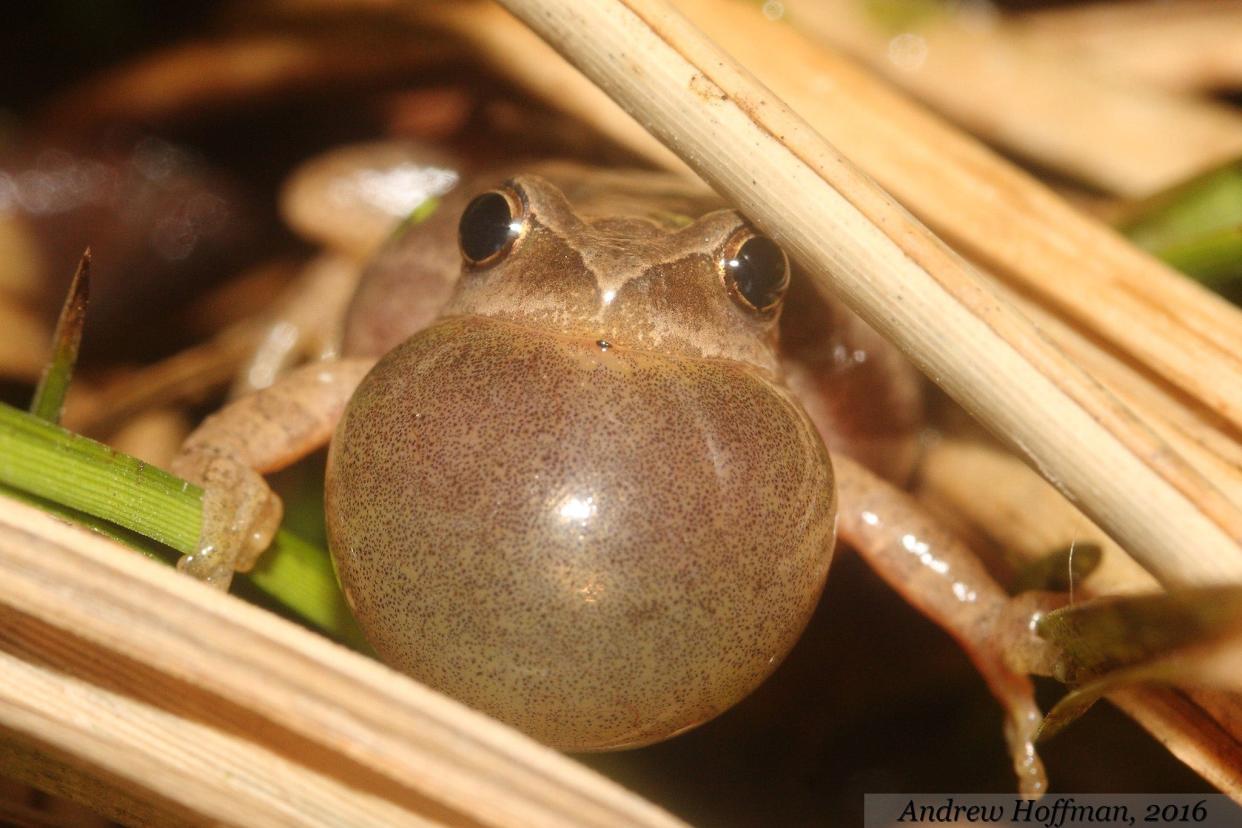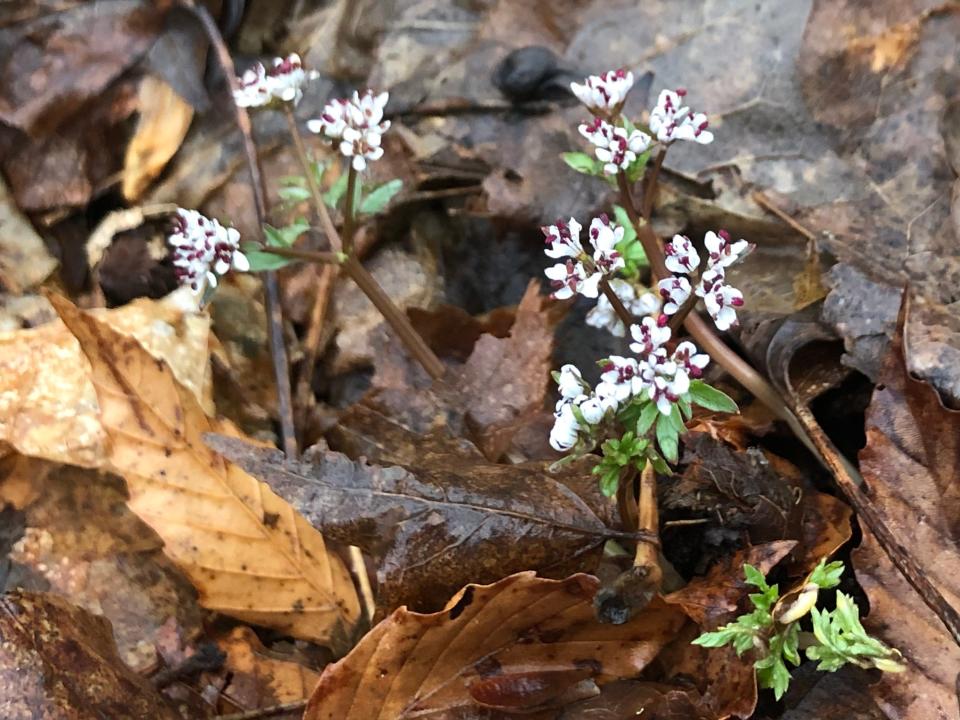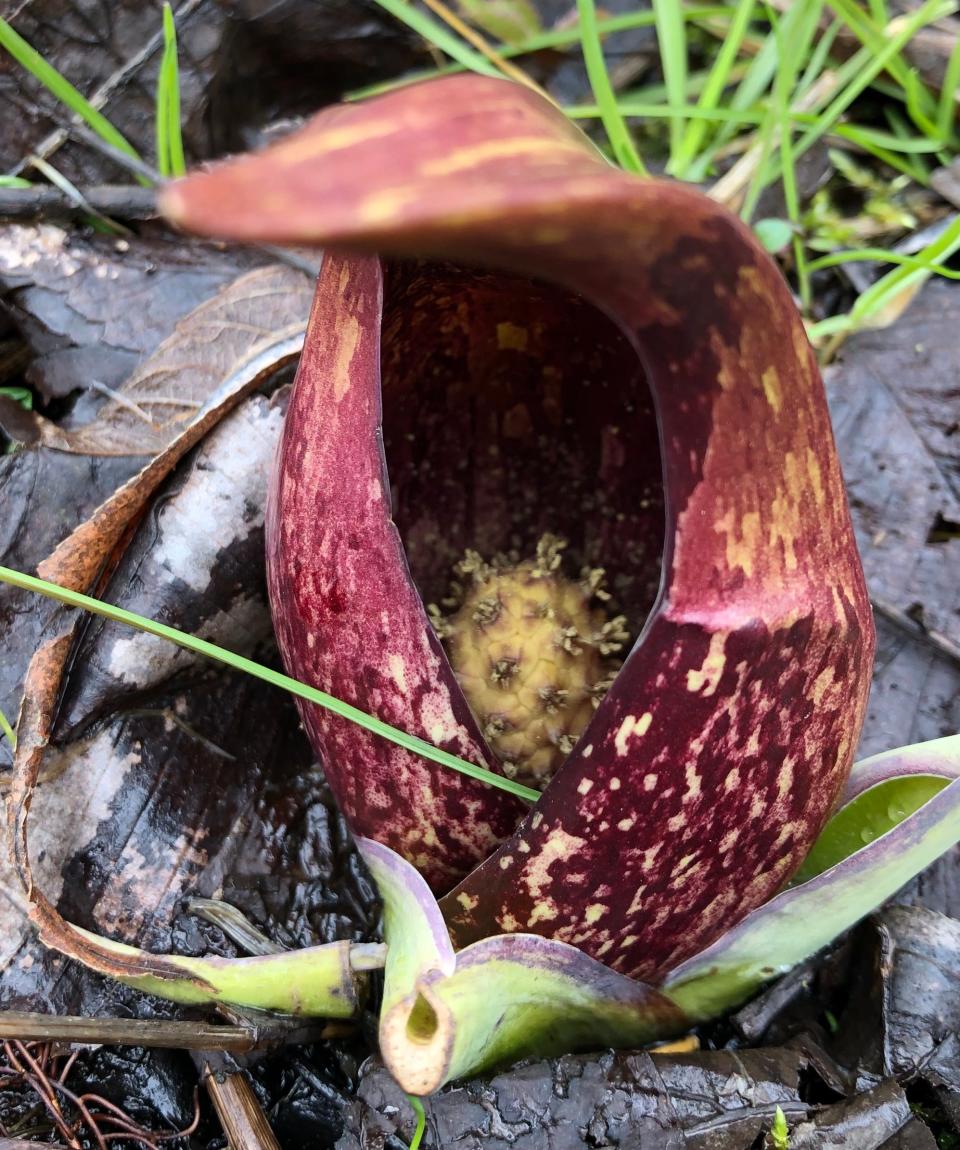Wildlife emerges in early warmth. Is it safe if we're hit with cold snap?

Spring peepers and chorus frogs are already singing their mating calls at Potato Creek State Park in North Liberty, much earlier than the usual time in mid-March, naturalist Jessica Filer says.
You can hear these washboard and chirping sounds if you roll down your windows as you drive slowly on the park’s main drive not far from the entry gate.
Hidden from sight, unless you pick up a log, salamanders have also started migrating to wetlands to breed, Filer says.
This winter’s bizarre surge of early warmth is causing the spring cycle of life to start much earlier, as we’ve seen with migrating birds that returned weeks earlier than usual, like the red-winged blackbirds and sandhill cranes that drifted in a month ago.
March 2, 2024: Back in action: Eagles lay eggs in St. Pat's nest after an off year
Speaking of which, three bird watchers were, no doubt, blown away Sunday, March 3 as they claim to have counted more than 39,000 sandhill cranes migrating along the Lake Michigan shore from the bird observation tower at Indiana Dunes State Park. Most were headed northwest, as the birders recorded on eBird.org.
But, like our beloved (though nonnative) apple and peach crops, could an early emergence be dangerous to native wildlife if March suddenly hits them with a harsh freeze?
In general, Filer says that if not enough rain comes in time, eggs from the peepers, frogs and salamanders could be at risk of drying out.
Garry Harrington, the chief naturalist at South Bend’s Rum Village Park, says he’d heard them last week at Potato Creek, too, and suspects there’s enough water now to last the season.
He adds that Rum Village’s vernal ponds — temporary, life-sustaining water that dries up by summer — are a bit on the low side, he says. Wood frogs and peepers are singing at Rum Village and just across the park border, he says.
Some animals could dive back into hibernation if snow and below-freezing temperatures settle in for several days, Filer adds. It takes a lot of energy reserves to do that, especially for frogs, who have a kind of antifreeze that allows their bodies to freeze and thaw out. Here at winter’s tail end, she questions, would they have enough energy to make it through that?
Harrington has also observed turtles coming out of hibernation, but they, like many of our native critters, are well adapted to the mood swings of our fickle winters.
“Mother Nature took care of that millions of years ago,” he says.

Along Rum Village’s trails on Monday, Harrington says, he spied the green leaves of the early spring woodland wildflowers as they started to emerge — for harbinger of spring, spring beauty, prairie trillium and anemone — but no blooms yet. Spring wildflowers are definitely hardy. Even their blooms can take a late dusting of snow.
The earliest of spring wildflowers, skunk cabbage, is out as usual in wetlands, so tough that it even melts the snow around it.

The odd season could have broader ecological effects, too.
Filer says the expanded warmth could worsen issues with toxic algae blooms in Worster Lake at Potato Creek unless it’s balanced by enough rain to cool off the water.
Already, the park did its light burning in the prairies in February because it was warm and dry enough, well ahead of the usual time in late March, Filer says. The controlled burns help to stimulate growth of native prairie plants, replicating what nature would otherwise do.
At home, you can help native pollinating insects by holding off on your urge to do spring cleanup in yards and gardens. The local group Save the Dunes advises you to wait on removing leaves, raking and mulching until we’ve had at least seven consecutive days of temperatures above 50 degrees. Many insects survive the winter by hiding inside of dead flower stalks or leaf or brush piles. They don’t emerge until it’s consistently warm.
In next week’s column, we’ll check on how the temperatures have played with the current maple sugar season, which relies on daily freeze-thaw cycles to pump sap out the trees. Pancakes and festivals are on the way.
Bye-bye skiing
Snow sports came to an abrupt halt this past weekend as Swiss Valley Ski & Snowboard Area in Jones made March 2 its final day of the season, about one week shy of how long it typically lasts.
Last dance for 2024: Last call for skiing at Swiss Valley this season on Saturday with final snow-making push
Many skiers and boarders were pleasantly surprised at how well the resort maintained its snow cover through the winter’s merciless warmth, thanks to Swiss’ investments to expand its snowmaking capacity. The final day was another example. It made snow and apparently also reclaimed snow ramps in the terrain park so that the resort could revive beginner and intermediate slopes.
Bittersweet Ski Resort near Kalamazoo says it’s closed until a “winter weather event” returns. Timber Ridge Ski Area closed more than a week ago. North of Grand Rapids, Cannonsburg called it quits after last weekend.
In northern Michigan, Schuss Mountain in Bellaire will cap off its season with slush cup stunts on March 9, while other resorts hang on.
Pitch in for Outdoor Adventures
This column could use your observations and photos in the next few months. I had bunion surgery on my foot (yes, just one of them) in mid-February, which explains why Outdoor Adventures has been on hiatus ever since.
My recovery, which is going well, will mean that it will be a few months before I can get back to hiking and biking. Until then, I welcome your observations of wildflowers, wildlife and trails and news about outdoor recreation. I won’t be able to use them all in the column, though some could go on the column’s Facebook page. It will help us to collectively find and connect with the outdoors.
To help out, email me at jdits@sbtinfo.com.
But don’t worry. I still have a list of my own ideas to explore, and I’ve got other photos squirreled away. Thanks, and happy trails!
Maple Madness
∎ Maple Sugar Time in the dunes: Indiana Dunes National Park runs this 47th annual festival from 10 a.m. to 4 p.m. EST March 9 and 10. Tour the sugaring operations at the historic Chellberg Farm, where the original farming family had made it in the 1930s. See how Native Americans and early settlers turned maple sap into sugar and syrup. Kids can learn to tap a tree, meet farm animals and enjoy a maple syrup snow cone. Tour the farmhouse, buy Indiana maple syrup and learn to make it at home. From now until the festival, you can visit volunteers at the sugar shack. Chellberg Farm is at 618 Mineral Springs Road, Porter, between U.S. 20 and U.S. 12. To enter the national park, it costs $25 per car for a pass for up to seven days, or $45 for an annual pass, available at the Indiana Dunes Visitor Center or at www.recreation.gov/sitepass/indu.
∎ Friends at Bendix Woods: Learn how maple trees produce sugar and how humans turn it into syrup from 5 to 7 p.m. March 6 at Bendix Woods County Park, on Timothy Road south of Indiana 2, New Carlisle. Visit the sugar house, where syrup is cooked, in this free program led by the Friends of Bendix Woods and Spicer Lake. Finish with refreshments and a brief meeting giving updates about volunteer opportunities and other ways that the Friends group supports the parks.
∎ Sugar Camp Days: This festival at Bendix Woods County Park in New Carlisle returns from 8 a.m. to 3 p.m. March 16 and 17 with the usual attractions, including the Lions Club pancake and sausage breakfast, wagon rides, sugar house demonstrations, ice carvings, blacksmiths and maple goodie sales. Cost is $8 per vehicle.
∎ Potato Creek tapping: See historical photos of the sugar camp that once was at Potato Creek State Park in North Liberty and learn how to tap your own maple trees at 2 p.m. March 16 at Potato Creek’s nature center.
Wild lives
∎ Bird walk: Join a guided hike to look for waterfowl, with help from spotting scopes and binoculars, from 8 to 10 a.m. March 6 at Boot Lake Nature Preserve, 51430 County Road 3, as part of the Elkhart County Parks series on the first Wednesday of the month.
∎ Wood duck house workshop: Learn how to make nesting houses for wood ducks and build them from 9 a.m. to noon March 9 so they can be installed onsite at the Elkhart Environmental Center, 1717 E. Lusher Ave. A limited number of box kits will be available for participants to buy at $55 each and build for their own homes, too. Registration is free but required by March 6 at https://elkhart-environmental-center.ticketleap.com/. Spots are limited.
∎ Squirrel hike: Hear and learn about survival tales of squirrels on a 1.2-mile hike with Harbor Country Hikers at 1 p.m. March 9 at Sugarwood Forest Preserve in Three Oaks, led by stewards Jackie Jensen and Mark Forrest of Chikaming Open Lands, which owns the preserve. Sugarwood is at 6813 W. Elm Valley Road, which is next to Warren Woods State Park. From Three Oaks, go north on Three Oaks Road, then turn left on Elm Valley Road for half a mile. It’ll be on the right.
∎ Eclipse in the dunes: Indiana Dunes State Park in Chesterton will host a Solar Eclipse 101 presentation at 2 p.m. EST March 10 and at 10 a.m. EST March 30 in advance of the total solar eclipse that will pass over central and southern Indiana (and here to a lesser degree) on April 8.
Find columnist Joseph Dits on Facebook at SBTOutdoorAdventures or 574-235-6158 or jdits@sbtinfo.com.
This article originally appeared on South Bend Tribune: Can frogs spring peepers wildflowers and wildlife survive cold snap

